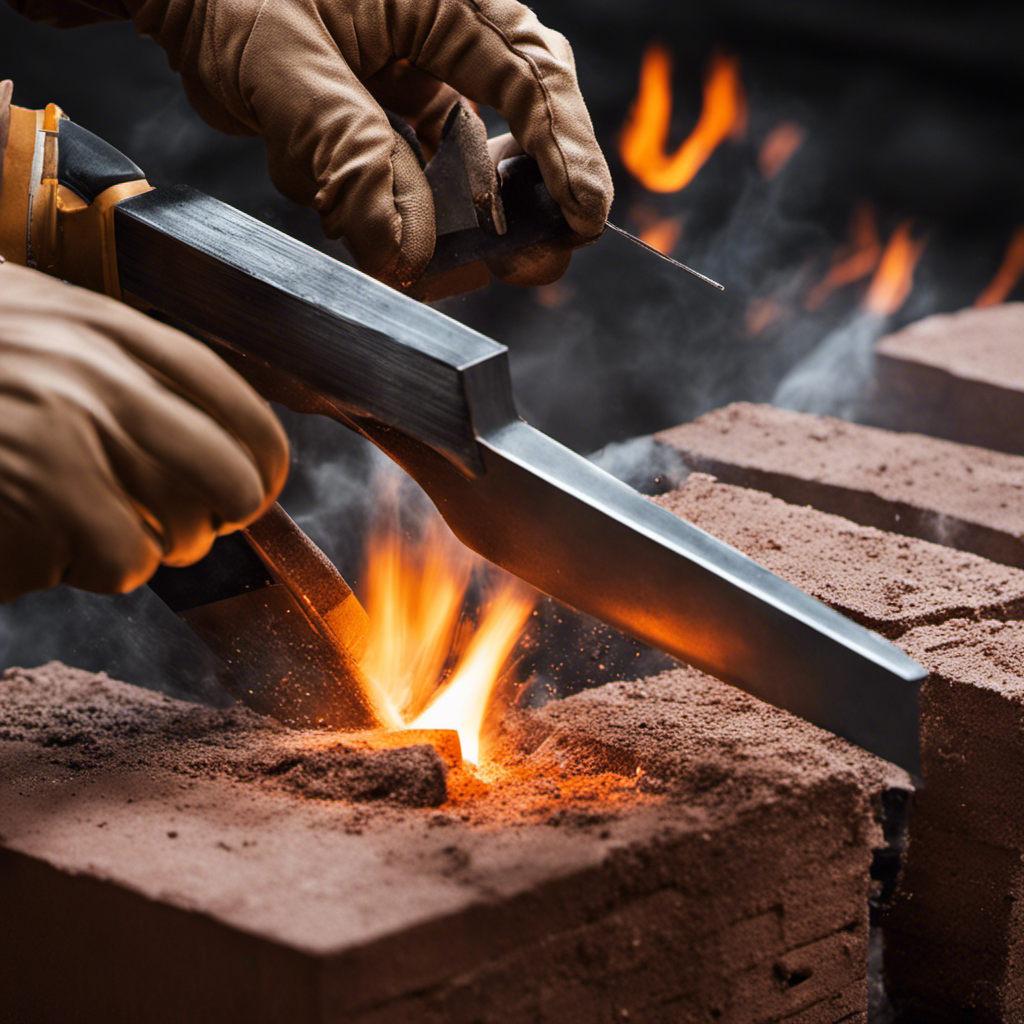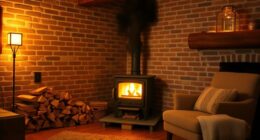As a wood stove enthusiast, I understand the importance of selecting the correct venting system for optimal performance and safety. It’s similar to choosing the ideal dance partner; they must work together seamlessly and enhance each other.
In this article, I’ll guide you through the various types of venting options available for wood stoves. From traditional chimney venting to direct venting and even power venting, we’ll explore the pros and cons of each method.
So, let’s dive in and find the ideal venting solution for your wood stove!
Key Takeaways
- Traditional chimney venting and masonry chimney venting use vertical flue pipes to remove smoke and odors from indoor environments, require regular maintenance, and can be expensive to install.
- Direct venting and power venting are more efficient and effective in removing combustion byproducts, reduce the risk of backdrafts and carbon monoxide poisoning, and provide greater flexibility in installation location.
- Pellet stove venting uses a specially designed venting system with double-wall construction, maximizes efficiency by minimizing heat loss, is easier and less expensive to install compared to masonry chimney venting, and can be installed through an exterior wall.
- Each type of venting has its own advantages and considerations, allowing homeowners to choose the option that best suits their needs and preferences.
Traditional Chimney Venting
I prefer using traditional chimney venting for my wood stove because it provides efficient and reliable ventilation.
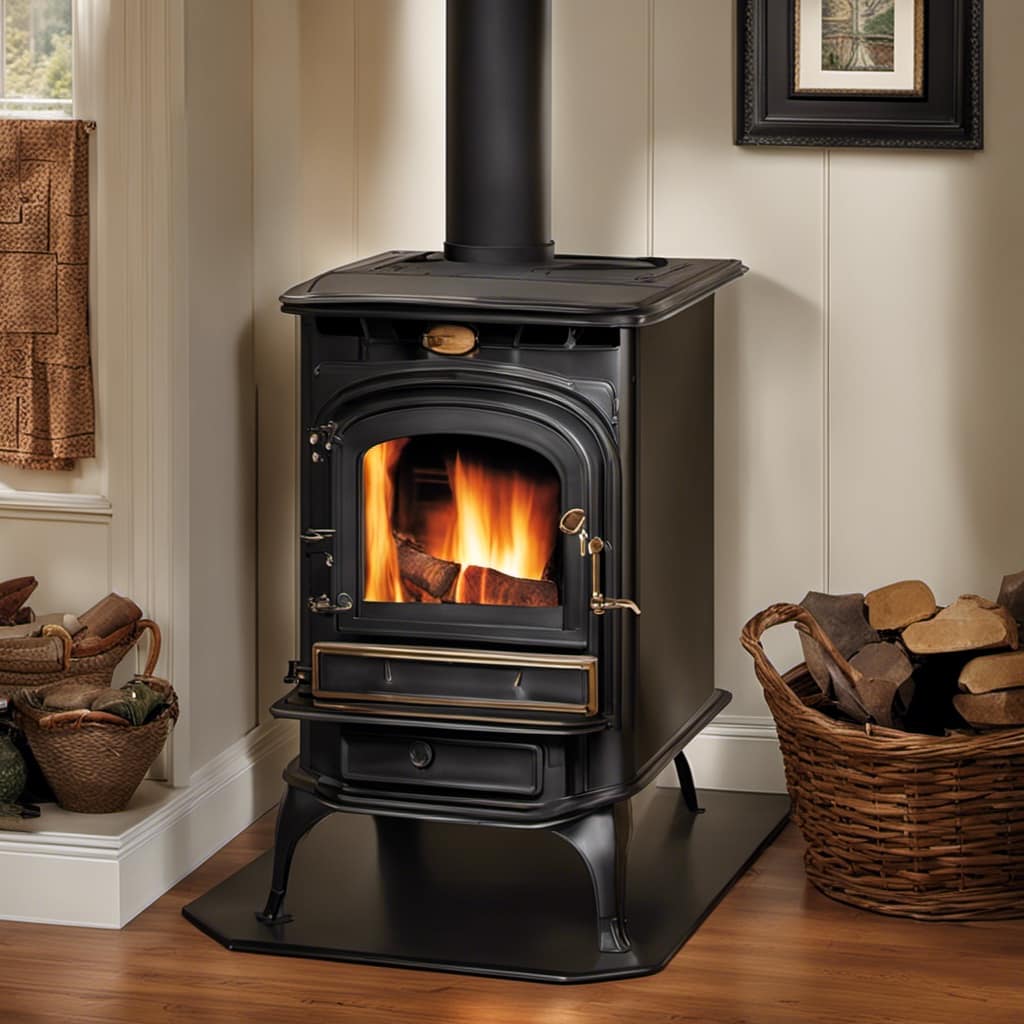
Traditional chimney venting involves the use of a vertical flue pipe that extends from the stove to the exterior of the building, allowing the smoke and gases to be safely released into the atmosphere.
One of the main advantages of traditional chimney venting is its effectiveness in removing smoke and odors from the indoor environment. It also helps in preventing the buildup of harmful gases like carbon monoxide, ensuring the safety of occupants.
However, there are also disadvantages to consider. Traditional chimney venting requires regular maintenance, including cleaning and inspection, to ensure the chimney is clear and functioning properly.
Additionally, the installation of a traditional chimney venting system can be expensive and may require professional assistance.
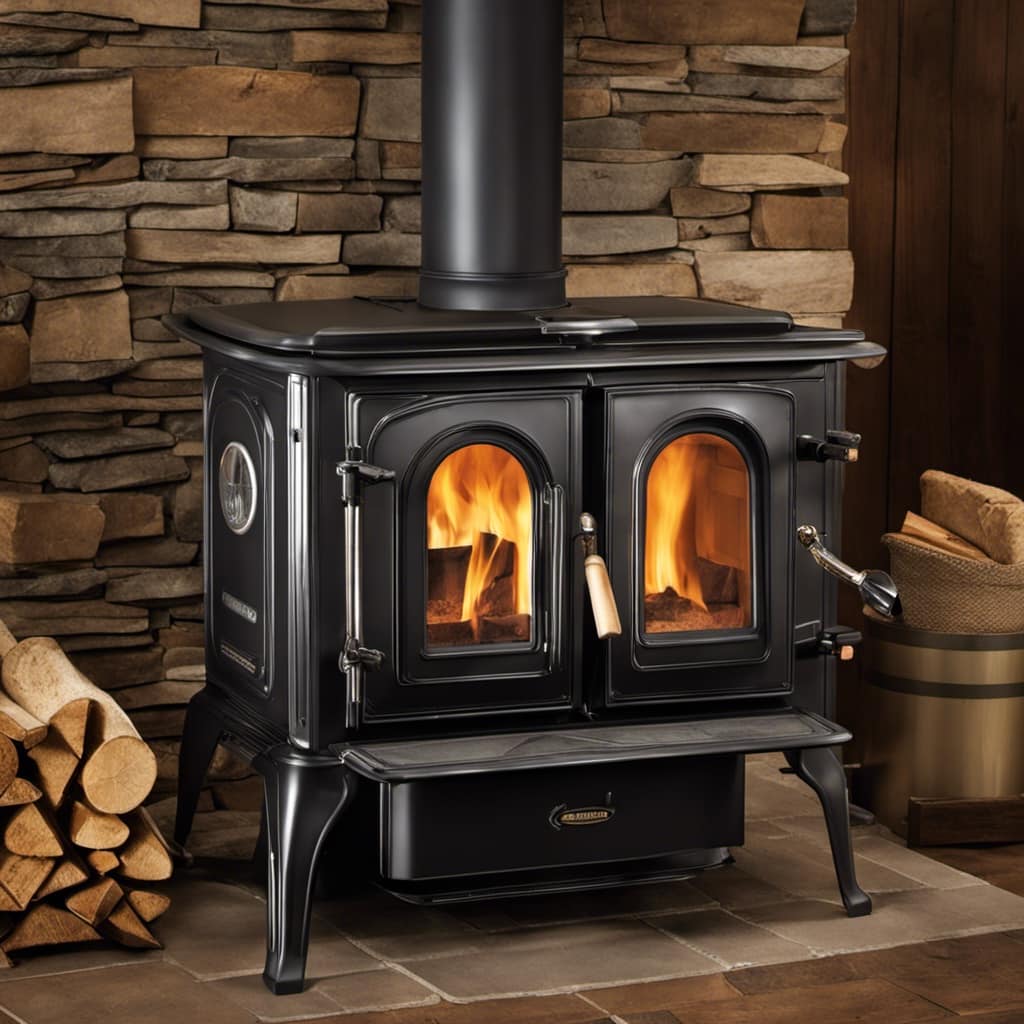
Direct Venting
Occasionally, direct venting is used as an alternative to traditional chimney venting for wood stoves.
Direct venting offers several benefits over the traditional method. Firstly, it’s a more efficient and effective way to remove combustion byproducts from the stove. The direct venting system pulls in outside air for combustion and vents the exhaust gases directly outside, eliminating the need for a chimney. This improves the stove’s performance and reduces the risk of backdrafts or smoke entering the room.
Secondly, the installation process of direct venting is simpler and more flexible. It requires less space and can be installed in various locations within a home.
Additionally, direct venting is safer as it reduces the risk of carbon monoxide poisoning.
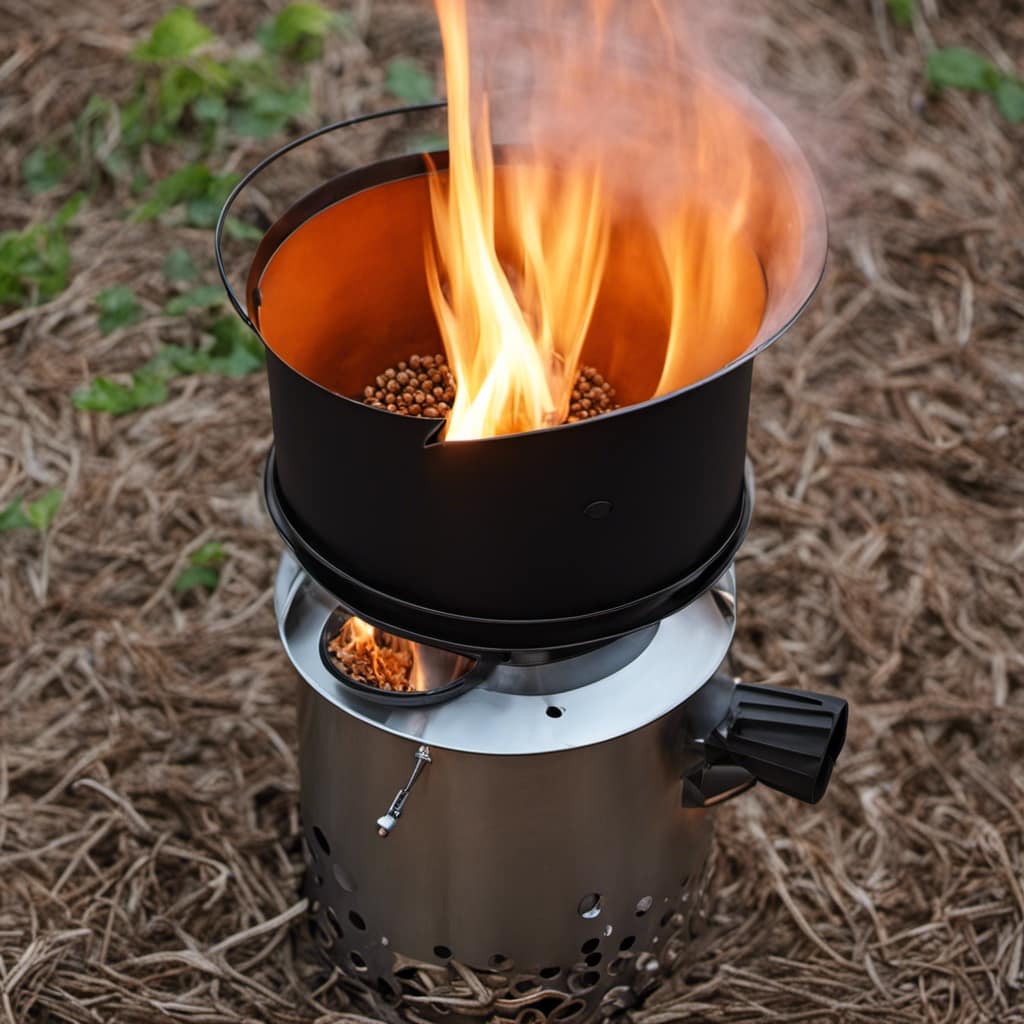
Overall, direct venting is a practical and advantageous option for wood stove owners.
Pellet Stove Venting
I prefer pellet stove venting because it’s more efficient and cost-effective. When it comes to pellet stove installation, proper venting is crucial to ensure the stove operates safely and efficiently. Pellet stoves use a specially designed venting system that consists of a small pipe within a larger pipe. The inner pipe carries the exhaust gases outside, while the outer pipe brings in fresh air for combustion. This double-wall construction helps to maximize efficiency by minimizing heat loss.
Additionally, pellet stove venting is easier and less expensive to install compared to masonry chimney venting. With a masonry chimney, you’d need to build or modify an existing chimney to accommodate the stove. In contrast, pellet stove venting can be easily installed through an exterior wall, making it a more convenient option.
Now let’s discuss the alternative option of masonry chimney venting.
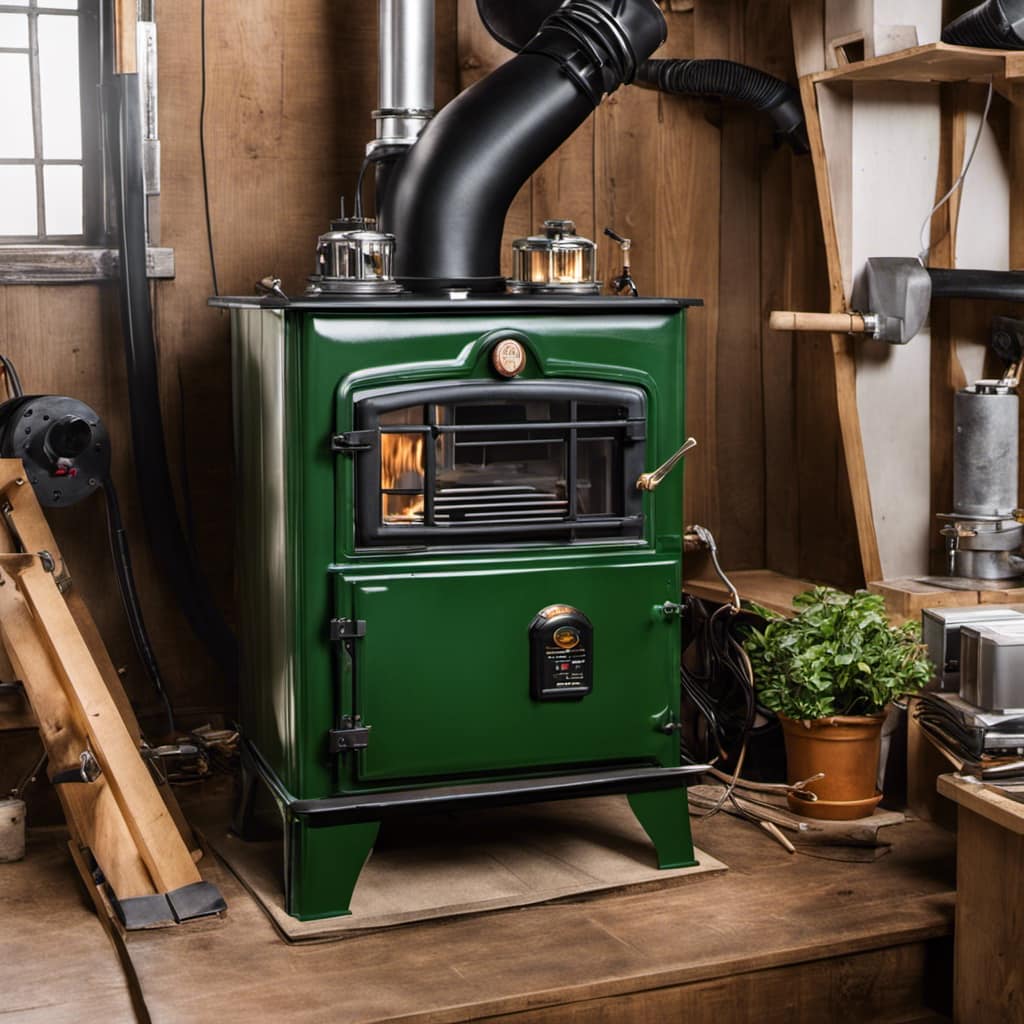
Is Proper Venting Necessary When Connecting a Wood Stove to Ductwork?
When connecting a wood stove to ductwork, proper venting is essential for safety and efficiency. A well-designed wood stove ductwork hookup ensures that smoke and harmful gases are properly vented outside, while also distributing heat throughout the home. It’s crucial to follow all local building codes and regulations to prevent any issues.
Masonry Chimney Venting
How can masonry chimney venting be a suitable option for wood stove venting?
Masonry chimneys are a popular choice for venting wood stoves due to their durability and efficiency. Here are four reasons why masonry chimney venting is a great option:
Masonry chimney construction: Masonry chimneys are built using bricks or stones, providing a strong and sturdy structure that can withstand high temperatures. This makes them ideal for venting wood stove emissions.
Proper draft: Masonry chimneys are designed to create a natural draft, which helps to pull smoke and gases out of the wood stove and safely out of the home. This ensures proper ventilation and prevents the buildup of harmful pollutants.
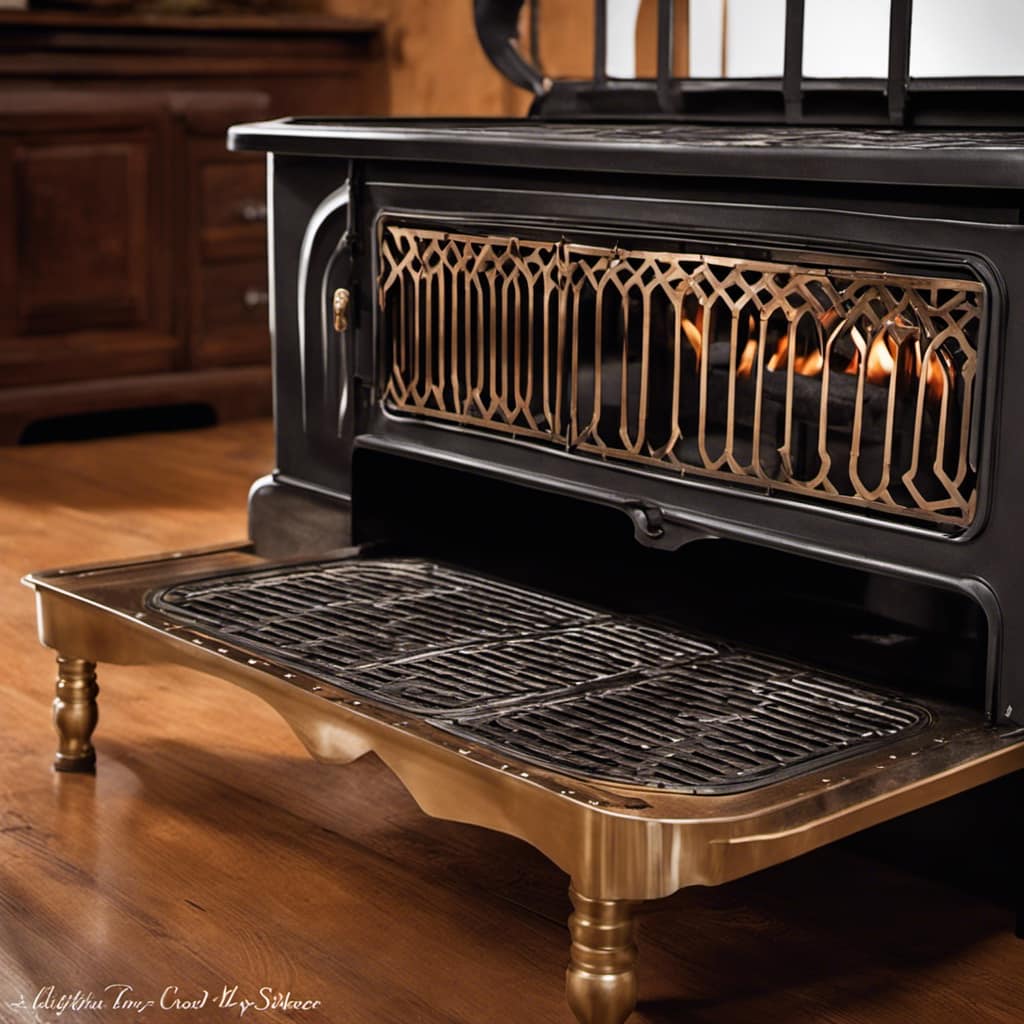
Low maintenance: With regular maintenance, masonry chimneys can last for decades. They require minimal upkeep, making them a cost-effective and convenient option for wood stove venting.
Versatility: Masonry chimneys can be customized to fit any home’s design and style. They come in various sizes and shapes, allowing for easy integration with existing structures.
Power Venting
I prefer power venting over other methods because it efficiently removes smoke and gases from the wood stove. Power venting is a popular choice for wood stove installations due to its numerous benefits. Firstly, it provides greater flexibility in terms of installation location, as it does not require a traditional chimney. This is especially beneficial for homeowners who may not have a suitable chimney or want to avoid the cost of building a new one. Secondly, power venting allows for better control of the venting process, ensuring that the smoke and gases are effectively expelled outside. This helps to maintain a clean and healthy indoor environment. Additionally, power venting systems are relatively easy to install and can be integrated with existing wood stove setups. Overall, power venting offers a reliable and efficient solution for wood stove venting.
| Power Venting Benefits | Power Venting Installation |
|---|---|
| Greater installation flexibility | Easy integration with existing setups |
| Efficient removal of smoke and gases | No need for a traditional chimney |
| Better control of venting process | Relatively easy to install |
| Maintains a clean and healthy indoor environment |
Conclusion
In conclusion, when it comes to venting for wood stoves, there are several options available depending on your specific needs and preferences.
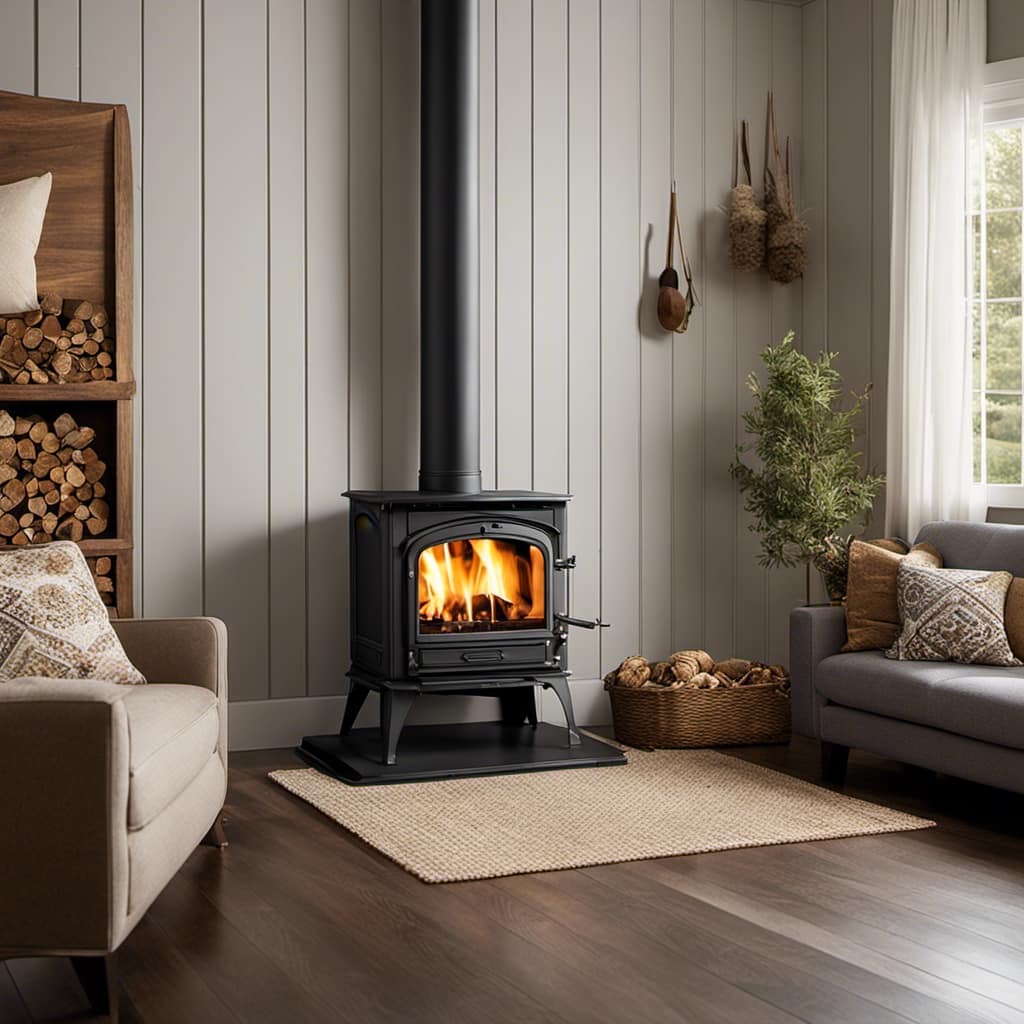
Traditional chimney venting is a popular choice, providing a classic and efficient way to remove smoke and gases.
Direct venting offers a more modern and convenient approach, while pellet stove venting is ideal for those using pellet stoves.
Masonry chimney venting is a durable and aesthetically pleasing option, and power venting provides a solution for spaces where traditional venting may not be feasible.
With these varied options, you can find the perfect venting system to ensure a safe and enjoyable wood stove experience.
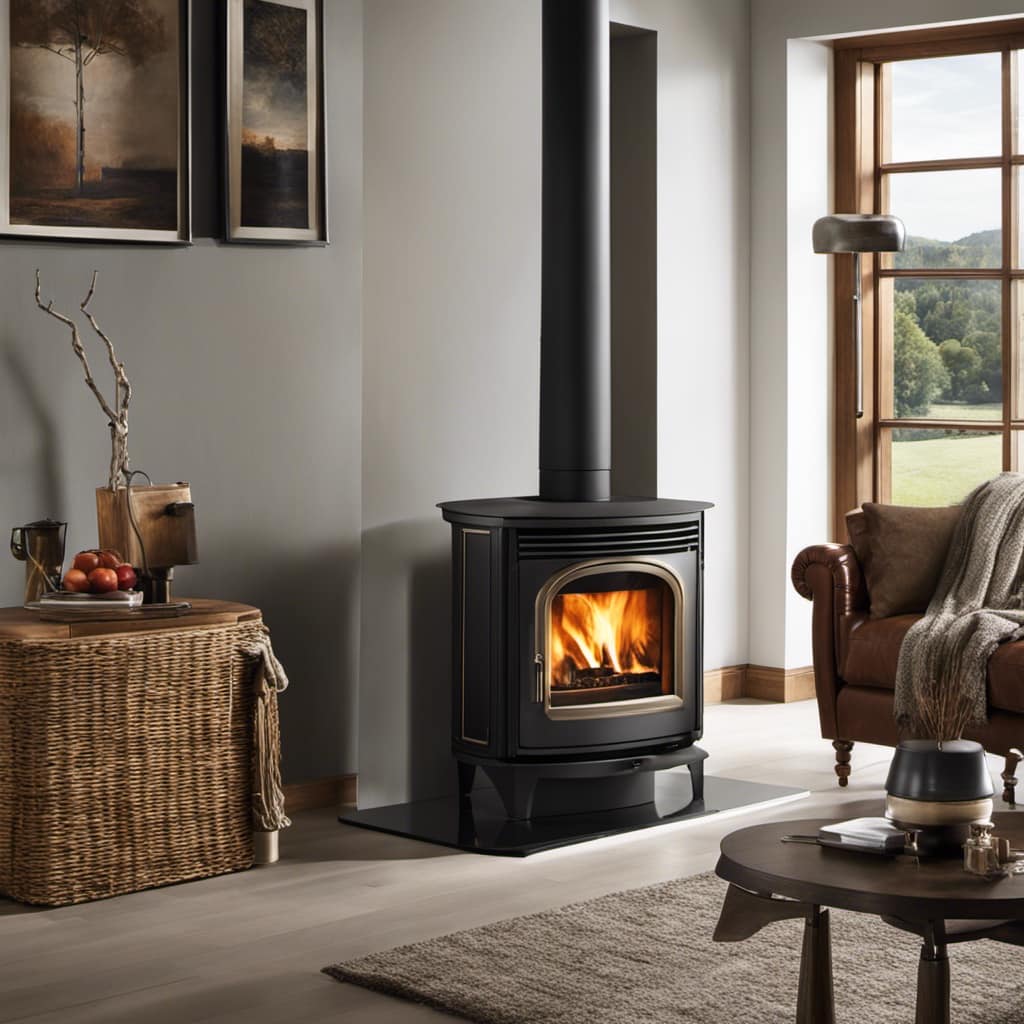
Growing up surrounded by the vast beauty of nature, Sierra was always drawn to the call of the wild. While others sought the comfort of the familiar, she ventured out, embracing the unpredictable and finding stories in the heartbeat of nature.
At the epicenter of every remarkable venture lies a dynamic team—a fusion of diverse talents, visions, and passions. The essence of Best Small Wood Stoves is crafted and refined by such a trio: Sierra, Logan, and Terra. Their collective expertise has transformed the platform into a leading authority on small wood stoves, radiating warmth and knowledge in equal measure.







